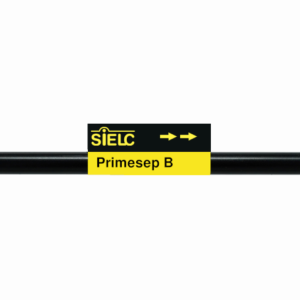
| CAS Number | 1222102-29-5 |
|---|---|
| Molecular Formula | C19H26F3N3O3 |
| Molecular Weight | 401.4 |
| InChI Key | LCDDAGSJHKEABN-MLGOLLRUSA-N |
| LogP | 1 |
| Synonyms |
|
Applications:
UV-Vis Spectrum of Evogliptin
July 19, 2024
UV-Vis Spectrum of Evogliptin. Absorption Maxima: 266 nm.
For optimal results in HPLC analysis, it is recommended to measure absorbance at a wavelength that matches the absorption maximum of the compound(s) being analyzed. The UV spectrum shown can assist in selecting an appropriate wavelength for your analysis. Please note that certain mobile phases and buffers may block wavelengths below 230 nm, rendering absorbance measurement at these wavelengths ineffective. If detection below 230 nm is required, it is recommended to use acetonitrile and water as low UV-transparent mobile phases, with phosphoric acid and its salts, sulfuric acid, and TFA as buffers.
For some compounds, the UV-Vis Spectrum is affected by the pH of the mobile phase. The spectra presented here are measured with an acidic mobile phase that has a pH of 3 or lower.

HPLC MS Method for Analysis of Evogliptin and Mannitol in Pharmaceutical Dosage Form on Primesep 200 Column
July 2, 2024
HPLC Method for Evogliptin on Primesep 200 by SIELC Technologies
High Performance Liquid Chromatography (HPLC) Method for Analysis of Evogliptin
Evogliptin is a drug that belongs to the class of dipeptidyl peptidase-4 (DPP-4) inhibitors. It is used primarily for the treatment of type 2 diabetes mellitus. DPP-4 inhibitors work by blocking the action of the enzyme DPP-4, which in turn increases the levels of incretin hormones such as GLP-1 (glucagon-like peptide-1). This increase helps to stimulate insulin release and suppress glucagon secretion, thereby helping to regulate blood sugar levels in patients with diabetes.
Evogliptin can be retained, and analyzed using a Primesep 200 mixed-mode stationary phase column. The analysis utilizes an isocratic method with a simple mobile phase consisting of water, acetonitrile (MeCN), and Ammomium Formate as a buffer. Detection is achieved using UV at 265 nm
You can find detailed UV spectra of Evogliptin and information about its various lambda maxima by visiting the following link.
| Column | Primesep 200, 2.1 x 100 mm, 5 µm, 100 A, dual ended |
| Mobile Phase | MeCN/H2O – 70/30% |
| Buffer | Formic Acid – 0.2% |
| Flow Rate | 0.2 ml/min |
| Detection | UV 265 nm, SIM + 402 |
| Class of Compounds |
Dipeptidyl peptidase-4 (DPP-4) inhibitor |
| Analyzing Compounds | Evogliptin |
Application Column
Primesep 200
Column Diameter: 2.1 mm
Column Length: 100 mm
Particle Size: 5 µm
Pore Size: 100 A
Column options: dual ended
LC MS Detection

HPLC Method for Analysis of Evogliptin in Pharmaceutical Dosage Form on Primesep B Column
July 1, 2024
HPLC Method for Evogliptin on Primesep B by SIELC Technologies
High Performance Liquid Chromatography (HPLC) Method for Analysis of Evogliptin
Evogliptin is a drug that belongs to the class of dipeptidyl peptidase-4 (DPP-4) inhibitors. It is used primarily for the treatment of type 2 diabetes mellitus. DPP-4 inhibitors work by blocking the action of the enzyme DPP-4, which in turn increases the levels of incretin hormones such as GLP-1 (glucagon-like peptide-1). This increase helps to stimulate insulin release and suppress glucagon secretion, thereby helping to regulate blood sugar levels in patients with diabetes.
Evogliptin can be retained, and analyzed using a Primesep B mixed-mode stationary phase column. The analysis utilizes an isocratic method with a simple mobile phase consisting of water, acetonitrile (MeCN), and sulfuric acid as a buffer. Detection is achieved using UV at 200 nm
| Column | Primesep B, 4.6 x 150 mm, 5 µm, 100 A, dual ended |
| Mobile Phase | MeCN/H2O – 15/85% |
| Buffer | H2SO4 -0.2% |
| Flow Rate | 1.0 ml/min |
| Detection | UV 300 nm |
| LOD* | 42.9 ppb |
| Class of Compounds | Dipeptidyl peptidase-4 (DPP-4) inhibitor |
| Analyzing Compounds | Evogliptin |
Application Column
Primesep B
Column Diameter: 4.6 mm
Column Length: 150 mm
Particle Size: 5 µm
Pore Size: 100 A
Column options: dual ended



